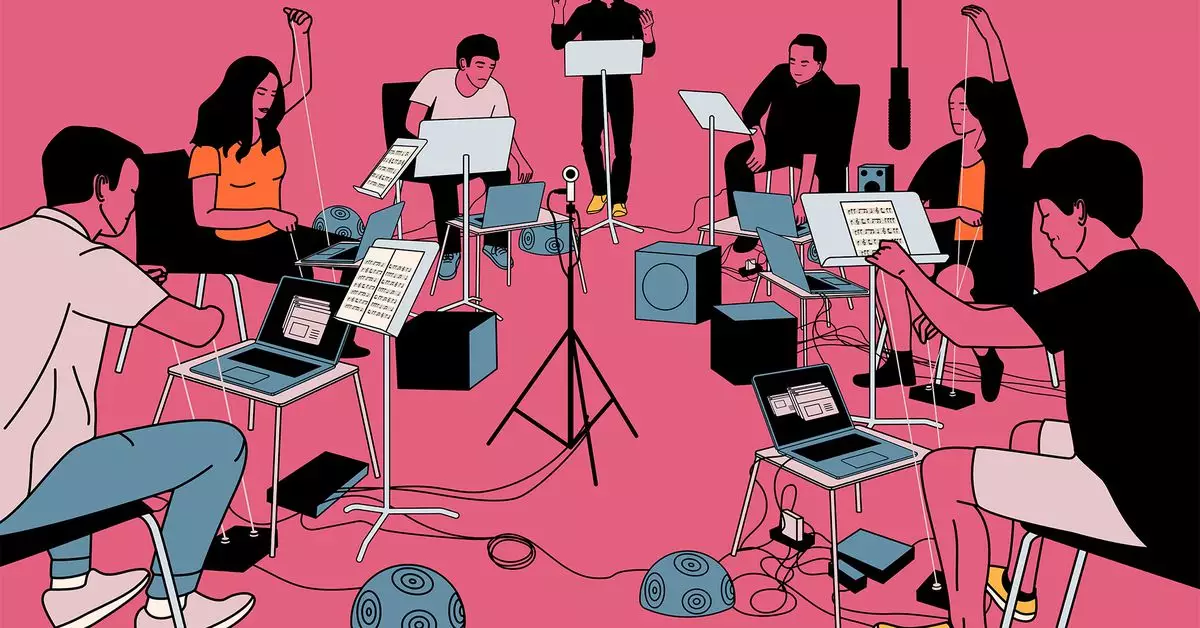In an age where technology reigns supreme, the landscape of music creation is undergoing a radical transformation. Ge Wang, an associate professor at Stanford and a prominent figure in the field of computer music, exemplifies this evolution. He does not just use computers to compose music in the conventional sense; rather, he leverages them to explore the fascinating realm of “computer music.” This term encompasses a broader spectrum of musical creation and interaction that merges technology with human creativity, challenging traditional methods and introducing new possibilities in sound production.
Wang’s role as the conductor of Stanford’s renowned Laptop Orchestra highlights an innovative approach to musical collaboration. In this unique ensemble, musicians utilize laptops as their primary instruments, creating a dynamic environment that encourages exploration and experimentation. This approach shifts the focus from technical mastery of individual instruments to an emphasis on creativity and collective interaction, fostering a new generation of musicians who view technology as a tool for artistic expression rather than an obstacle to overcome.
As technology evolves, so too does its impact on the creative process. In a recent episode of The Vergecast, Wang discussed the intricate relationship between music and artificial intelligence. While AI-powered tools are designed to simplify and expedite the creative process, they raise critical questions about the nature of creativity itself. Are artists becoming too reliant on technology to generate ideas and produce music? Or can AI serve as a catalyst for deeper creative exploration?
Wang advocates for a balanced approach. He emphasizes that while technology can enhance musical capabilities, it should not replace the essential elements of human creativity and nuance. The challenge lies in understanding how to integrate these tools thoughtfully, ensuring they augment rather than diminish the artistic experience.
Amid these technological advancements, the fundamental question arises: What does it truly mean to be creative in a world that increasingly values efficiency and uniformity? As we embrace digital tools designed to streamline the creative process, the risk of homogenization looms large. Creative expression often flourishes in the face of challenges, and the process of struggling with an instrument or grappling with composition can be just as rewarding as the end result.
Wang’s insights encourage artists and technologists alike to reflect on their goals. Ease and simplicity of creation may seem desirable, but they should not overshadow the importance of the artistic journey. Instead of solely aiming for efficiency, there should be a concerted effort to maintain the richness of the creative process—embracing imperfections, exploration, and the labor of love that often defines true artistry.
As we look to the future, the collaboration between technology and music presents a thrilling horizon. Educators like Wang are pioneering new ways to engage students, encouraging them to play with technological tools and unlock their creative potential. By fostering environments that prioritize exploration over mastery, future musicians will be better equipped to navigate the complexities of modern music-making.
In a world where technology continues to evolve, the intersection of music and innovation invites us all to reconsider our roles: as creators, collaborators, and consumers of sound. The essence of creativity may not be found in the ease of production but in the depth of human experience and the intricacies of artistic exploration—elements that technology can enhance but not replace.

